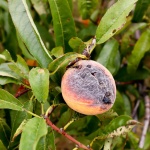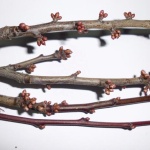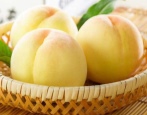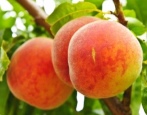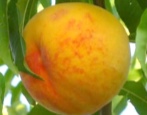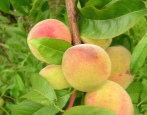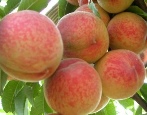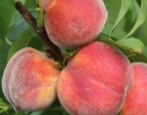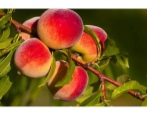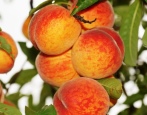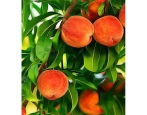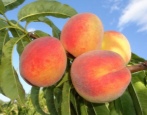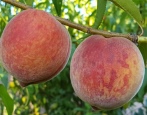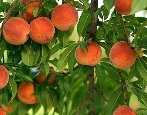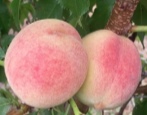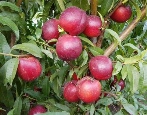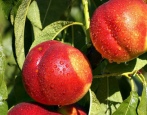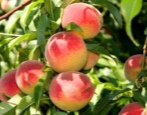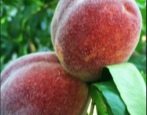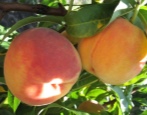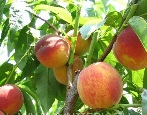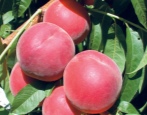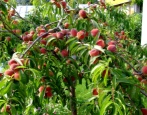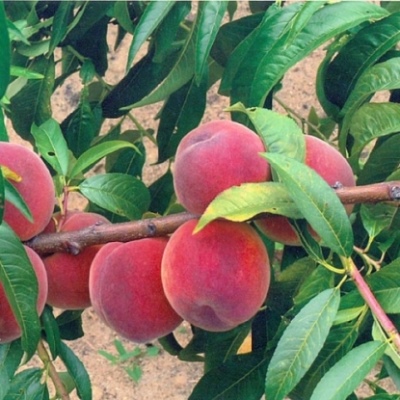
- Authors: VC. Smykov, V.P. Orekhova, Z.N. Perfil'eva (Nikitsky Botanical Garden - National Scientific Center of the Russian Academy of Sciences)
- Year of approval: 2014
- Growth type: medium-sized
- Ripening period: mid-early
- Appointment: for fresh consumption, for canning
- Growing regions: North Caucasian
- Bone size: more than average
- Separability of the bone from the pulp: medium
- Fruit composition: dry matter - 13.6%, sugar - 12.1%, acid - 0.92%, vitamin C - 9.2%
- Winter hardiness: high
The Ambassador of Peace is distinguished by its large fruits, excellent taste, versatility in use and unpretentious care. Of the shortcomings that are important to consider in the care process, there are only the fragility of the branches, as well as the need to strictly follow the rules for pruning.
Breeding history
Painstaking and effective work on the breeding of this culture was carried out by the employees of the National Scientific Center of the Russian Academy of Sciences: V.K.Smykov, V.P. Orekhova, Z.N. Perfilieva. It appeared in the State Register in 2014 and is recommended for cultivation in the North Caucasus region.
Description of the variety
The trees of the culture belong to the medium-sized type (5-6 m), have spreading crowns of medium density and rounded configuration. The foliage is lanceolate, medium-sized, short-pointed, green in color, shiny. The formation of flower buds occurs on the overwhelming majority of shoots, and flowering is long. Bell-shaped flowers with five pinkish petals grow singly.
Harvesting of fruits is carried out in August. The applicability of fruits is wide: they are used fresh, in compotes, juices and jams, in canned form, as frozen semi-finished products and as dried fruits.
Actual pluses of culture:
- high yields and their stability;
- excellent taste properties;
- reliable level of frost resistance;
- high immune potential;
- good transportability and keeping quality.
Minuses:
- the presence of fragile twigs, often breaking under the significant weight of the fruit;
- the need to follow the rules of neat pruning.
Fruit characteristics
Peaches are large (160-250 g), round in shape, with a basic yellow color and a carmine-colored integumentary tone, which occupies up to 80% of the fruit area.
The skin is medium in density, with velvety pubescence. It is removed from ripe peaches without hindrance. The consistency of deep yellow shades, with a lot of juice, dense and fibrous structure. The bones are larger than medium in size, ovoid, they are separated from the consistency with effort.
Taste qualities
The fruit tastes sweet and sour, pleasant, with a rich aroma. Tasting score in points - 4.8.
Ripening and fruiting
The culture is medium early. Fruiting starts at 3-4 years of growth. Trees bear fruit in the first days of August.
Yield
Trees at the age of 6 years bring yields up to 80-100 centners per hectare. Yields can increase with age.
Self-fertility and the need for pollinators
The plant is self-pollinated, so there is no need to plant pollinating trees.
Growing and caring
For planting crops, they choose the southern or southwestern side of well-lit and windless areas located on small hills. The distance between the seedlings is maintained at about 4 m. At the same time, the proximity of tall and thickened trees should be excluded. Shading of peach plantings leads to poor yields, crushing of fruits, and loss of their taste.
The soils should be slightly acidic, moist, and the location of groundwater should be no higher than 1-1.5 m from the edge of the soil.Effective drainage must be provided at landing sites. It is advisable to plant seedlings during dormant periods. In the spring - in March, and in the fall - in the first days of September (taking into account the local climate). In warm latitudes, an autumn landing is recommended, and in cooler places, a spring landing.
Preparatory activities are carried out approximately 6 months before disembarkation. Planting grooves with dimensions 80x100 cm are being prepared. The landing pattern is 4x5 m. The bottom of the grooves is filled with chernozem and humus (11-15 kg) with a superphosphate additive (250-350 g). In this case, a special landing mound is formed.
The selection of seedlings is carried out according to a typical scheme. In this case, the trees should not be more than 1.5-2 years old, the grafting sites should be without influxes. Pre-planting activities consist in examining the rhizomes and removing 0.5-1.5 cm of roots to healthy tissues. The slices should exude a white sap.
The disembarkation process is standard. Post-plant watering includes 20-30 liters of water. It is better to mulch the near-stem space with manure (8-10 cm), but the fertilizer should not be located close to the seedling.
The culture requires abundant irrigation both during planting and during fruiting. During the growing season, 3-4 irrigations are required, they are usually carried out in the first 6-7 days of each summer month. It is recommended to irrigate a month before picking the fruits: this stimulates the growth of peaches and the preservation of their taste. Watering is carried out so that moisture penetrates into the soil by 60-70 cm and reaches the roots of plants. Irrigation volumes for mature trees should be 20-40 liters of water.
The described variety needs feeding. In sparse soils, organic matter alternates with mineral fertilizers, which are applied annually. In fertile soils, fertilizing is carried out at intervals of once every 2-3 years.
During the period of development and ripening of fruits under the trees, add:
- urea (30-50 g) or ammonium nitrate (50-60 g), this is a dose per 10 liters of water;
- superphosphate - 100-150 g;
- potassium sulfate (50-70 g) or potassium chloride (30-60 g);
- ammonium sulfate - 50-80 g;
- borax - 10 g.
Top dressing of young plants is carried out 2-4 times during the growing season with an interval of 2-4 weeks (from April to mid-July). In summer, peach trees are fertilized using the foliar method. In autumn, the near-stem space is dug up, and then fertilized with calcium chloride - 50 g / m², as well as superphosphate - 40 g / m². In this case, organic matter is also used.
The process of forming cupped crowns starts immediately after disembarkation. Shoots are pruned in stages, in the course of their growth. Here, the exact definition of skeletal branches that perform supporting functions for abundantly fruiting trees will be relevant.
The pruning procedure is carried out during sap flow, when flowering has not yet begun. The length of this period is 15-20 days. Sanitary pruning is done every year after the peaches are harvested. Normalizing is performed as insurance against overloading the branches with fruits.
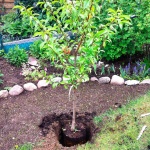
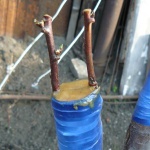
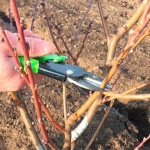
Frost resistance and the need for shelter
Despite the reliable degree of frost resistance of the culture, the insulation of its roots is necessary (especially in cool regions). It is produced in standard ways. The culture tolerates dry periods moderately.
Disease and pest resistance
The culture is not very susceptible to diseases or lesions are manifested in weak forms.
Preventive procedures will be as follows:
- in the spring, before the appearance of the kidneys, use "Horus" or Bordeaux liquid;
- during the period of swelling of the buds, the trees are treated with aphids, moths;
- at the end of flowering, trees are treated with combined agents against harmful attacks and diseases;
- in the fall, trees are sprayed with sulfur and lime solutions or fungicides;
- after the foliage is dropped, the peaches are treated with solutions of urea or copper sulfate.
